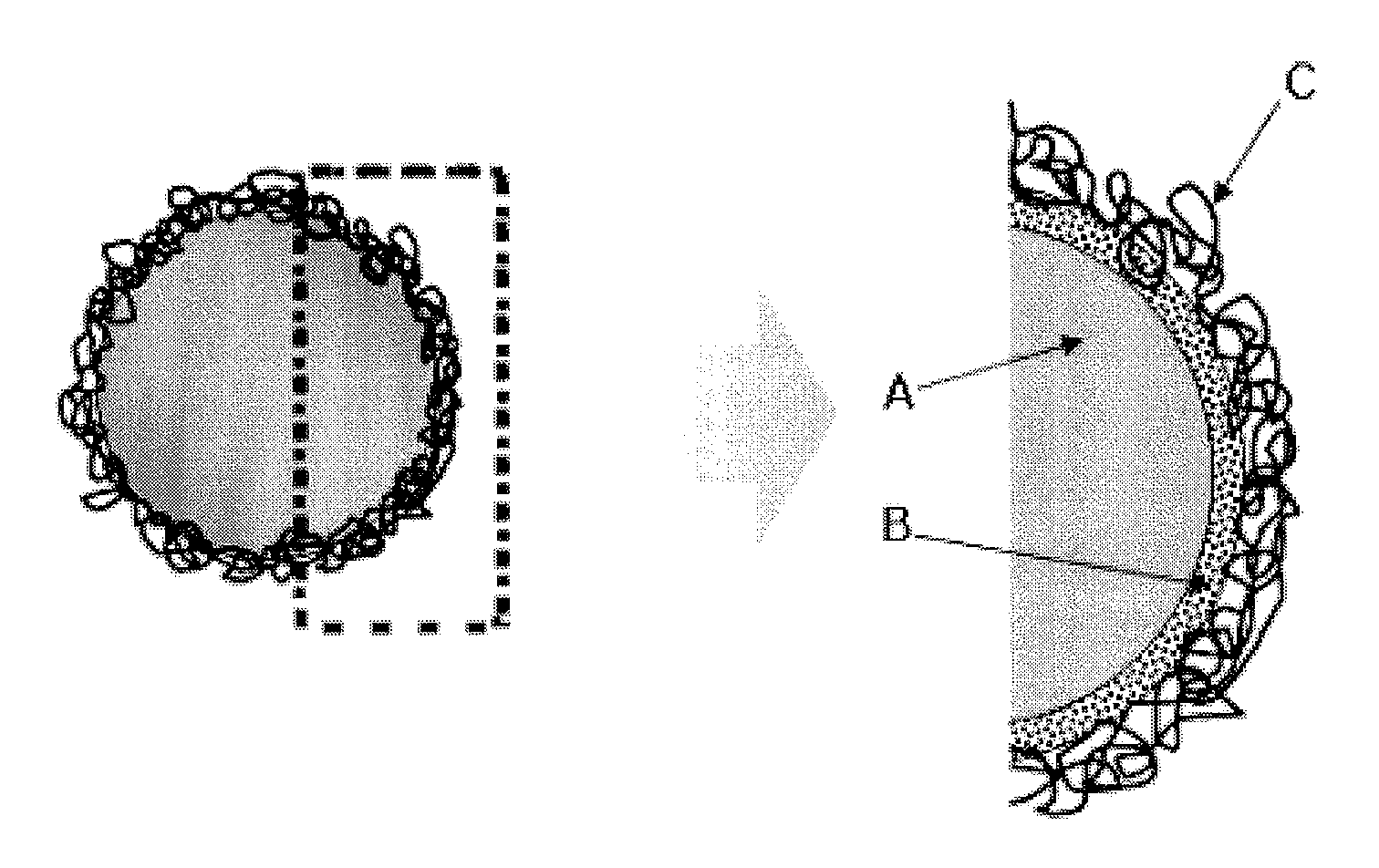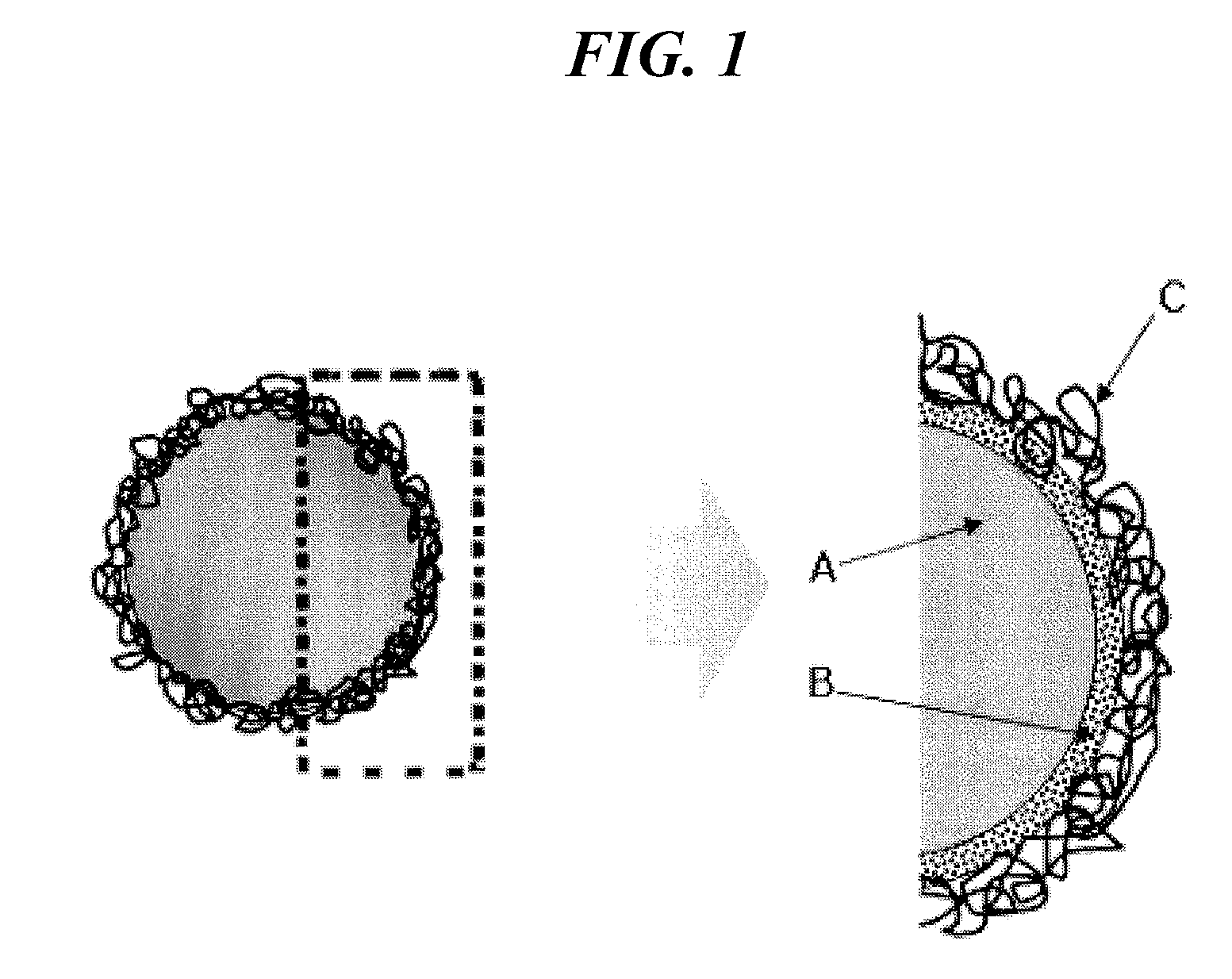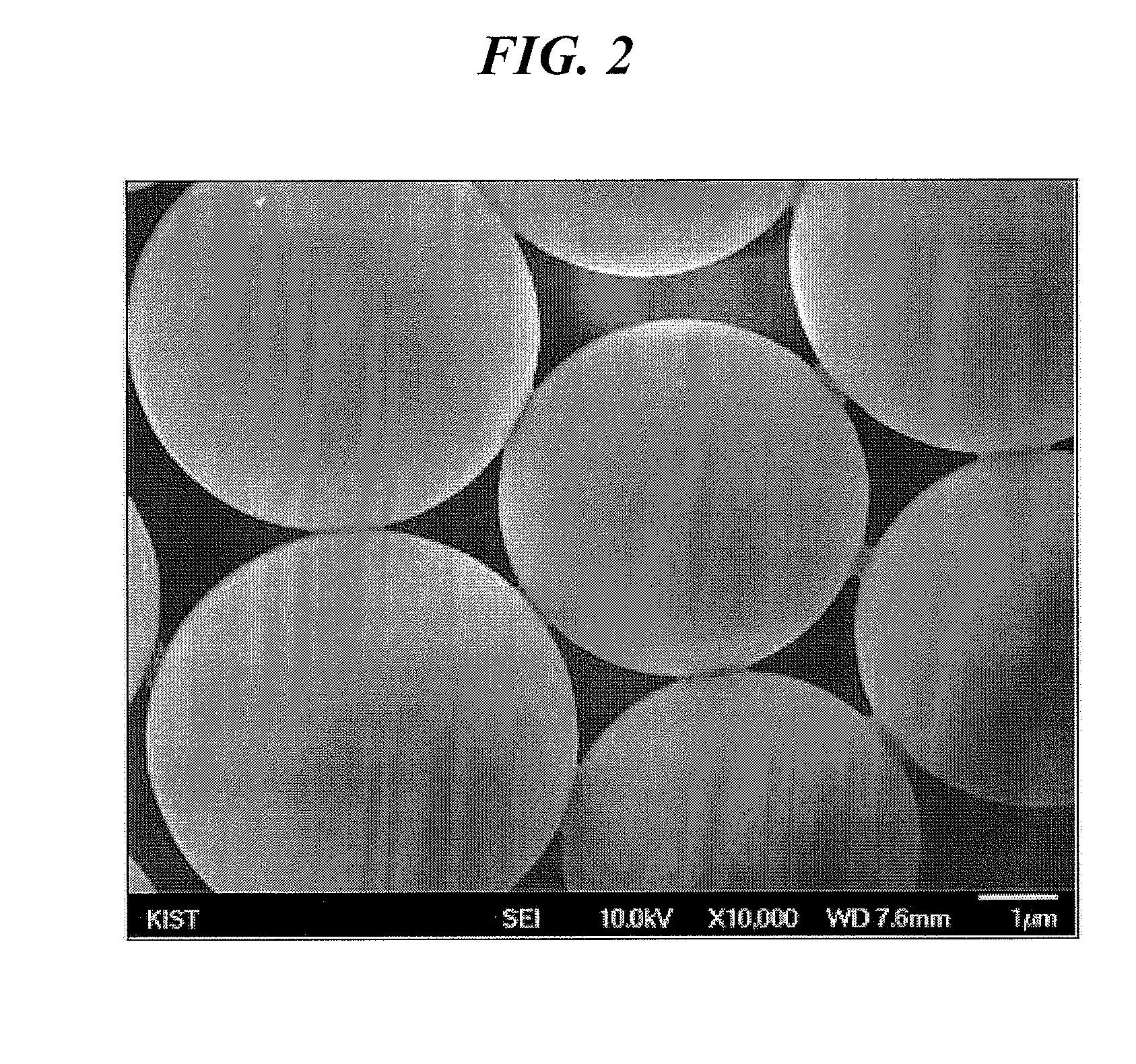Electroconductive particle comprising graphene-coated polymer particle, anisotropic conductive film comprising same and method of making thereof
a technology of anisotropic conductive film and graphene coating, which is applied in the field of electroconductive particle, can solve the problems of poor mechanical properties, prone to erosion or oxidation, and high production cost, and achieves improved performance characteristics in terms of long-term stability of conductivity, surface conductivity, thermal resistance and electroconductivity.
- Summary
- Abstract
- Description
- Claims
- Application Information
AI Technical Summary
Benefits of technology
Problems solved by technology
Method used
Image
Examples
example 1
[0102]Step (1): Preparation of Polymer Microparticles Having a Plurality of Condensation-Reactive Functional Groups
[0103]Polymer microparticles having a plurality of hydroxyl groups (—OH, condensation-reactive functional group) were prepared as follows:
[0104]A 3-neck flask was charged with a mixture of 200 ml of isopropanol and 10 ml of deionized water, and the flask was maintained at the temperature of 70° C., and stirred at 400 rpm for 30 minutes under a nitrogen atmosphere. Then, 5 mole of polypyrrolidone (dispersing agent), 1 mole of styrene (hydrophobic vinyl-based monomer), 0.5 mole of p-acetoxystyrene (auxiliary monomer), and divinylbenzene (crosslinking agent) in an amount of 3 mol % based on the total weight of the monomer and the auxiliary monomer were added thereto, and stirred for about 10 minutes, followed by conducting a condensation reaction for 8 hours using 1 g of azobisisobutylonitrile as an added polymerization initiator.
[0105]The resulting mixture was quenched af...
example 2
[0116]Step (1′): Preparation of Polymer Microparticles Having a Plurality of Ionic Functional Groups
[0117]A 3-neck flask was charged with a mixture of 200 ml of isopropanol and 10 ml of deionized water, the flask was maintained at the temperature of 70° C., and stirred at 200 rpm for 30 minutes under a nitrogen atmosphere. Then, 5 mole of polypyrrolidone (dispersing agent), 1 mole of styrene (hydrophobic vinyl-based monomer), 0.5 mole of metacryloxyethyltrimethylammoniumchloride (auxiliary monomer to give cationic property), and divinylbenzene (crosslinking agent) in an amount of 3 mol % based on the total weight of the monomer and the auxiliary monomer were added thereto, and stirred for about 10 minutes, followed by conducting a condensation reaction for 8 hours using 1 g of azobisisobutylonitrile (AIBN) as an added polymerization initiator.
[0118]The resulting mixture was quenched after completion of the condensation reaction to obtain polymer microparticles. The polymer micropart...
PUM
| Property | Measurement | Unit |
|---|---|---|
| particle size | aaaaa | aaaaa |
| temperature | aaaaa | aaaaa |
| reaction temperature | aaaaa | aaaaa |
Abstract
Description
Claims
Application Information
 Login to View More
Login to View More - R&D
- Intellectual Property
- Life Sciences
- Materials
- Tech Scout
- Unparalleled Data Quality
- Higher Quality Content
- 60% Fewer Hallucinations
Browse by: Latest US Patents, China's latest patents, Technical Efficacy Thesaurus, Application Domain, Technology Topic, Popular Technical Reports.
© 2025 PatSnap. All rights reserved.Legal|Privacy policy|Modern Slavery Act Transparency Statement|Sitemap|About US| Contact US: help@patsnap.com



